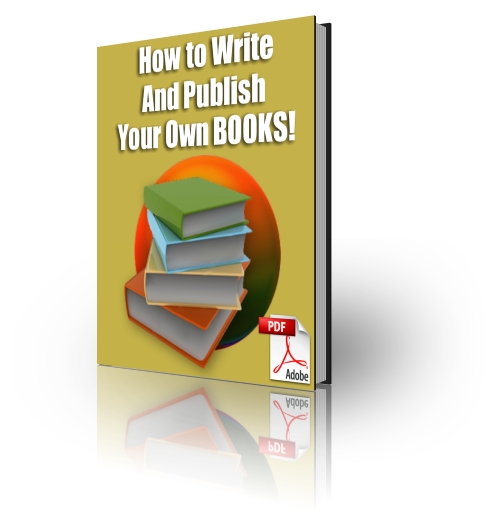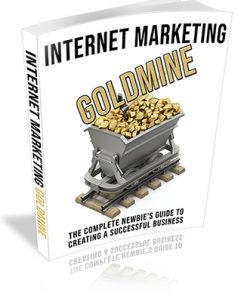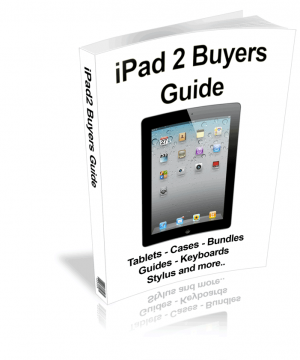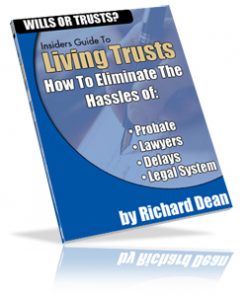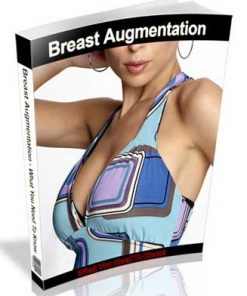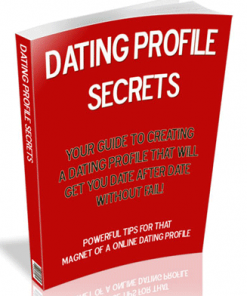| File Format: | MS Word Document, Open Office, PDF |
| Number of Pages: | 94 |
| Salespage: | Included. HTML |
| Download/Thank You Page: | Included. HTML |
| Included Graphics: | Cover and miscellaneous graphics. |
| Cover Graphics: | JPG |
| Miscellaneous Graphics: | Header, footer, buttons and more. |
| Extra Pages: | None. |
| Extras: | None. |
| Year Released/Circulated: | Unknown, but timeless information. |
| Suggested Selling Price: | $17 |
Here’s what you’ll discover in "How to Write and Publish Your Own Books"
Day One: What’s a book proposal? Develop an idea for your book
Exactly what a book proposal is, and an
Day Two: Develop your idea and assess the market
Here’s an excerpt from Day Two:
Dispelling myths and a word about confidence
If you’re feeling nervous now that you’re about to start this project, relax. Tell yourself that you will take it step by step. All you need to do is work at it steadily, a word, sentence and paragraph at a time, and you will complete your proposal, and then when you’ve sold the proposal, you’ll complete your book using the same easy-does-it method.
While we’re at it, let’s dispel a few myths.
Myth One
It takes a special talent to write books.
It takes persistence. There are as many different kinds of writers as there are people. Some are young, some are elderly, many are in-between. You don’t need any special writing talent to write books, nor do you need to be highly educated. Many successful writers have never completed high school. If you can write well enough to write a letter, you can write a book.
Myth Two
Writers starve in garrets.
Many professional writers make incomes that would make doctors and lawyers envious. Most make reasonable incomes. If you decide to make a career of writing nonfiction books, the major benefit is that if you choose your book’s topic with care, your book can stay in print for many years. For each year that your book’s in print, you get two royalty checks. Let’s say that you write two books a year for five years. At the end of the five years, if your books all stay in print, you’ll be getting ten royalty checks a year. These ongoing royalties are your nest-egg, profitable investments in your future.
Day Three: Write the blurb and outline your book
The "blurb" is the back cover material for your book — the selling points which will get people to buy the book. If you write the blurb before you write an outline, you’re guaranteed not to wander off the track as you write your book.
Writing the blurb will keep you on-track as you write your proposal and your book. I’ve included two sample blurbs from my published books to show you how to write a selling blurb.
Day Four: Research your book proposal, and flesh out your book’s outline
The fast and easy way to research your proposal – you may not need to do any research at all. You may already know all you need to know.
Day Five: Write your proposal query letter, and submit it to agents and publishers
How to write a SELLING query letter, with sample letters which have SOLD books.
Day Six: Write the proposal
The fast and easy way to write your proposal — everything you need to include to make sure that your proposal SELLS.
Day Seven: Write the sample chapter. Revise your proposal
Seven days, and you’re done! How to write the professional way, and a step by step easy way to revise.
"How to Write and Publish Your Own Books also includes a complete, selling proposal, which got a contract from the first agent who saw it.
Product Rights:
[YES] Includes Sales Page (copy only in MS Word)
[YES] Can be given away.
[YES] Can be packaged.
[YES] Can be offered as a bonus.
[YES] Can Be Edited Completely and Your Name Put on it.
[YES] Can be used as web content
[YES] Can be broken down into articles
[YES] Can be added to paid membership sites
[YES] Can be offered through auction sites.
[YES] Can sell Resale Rights
[YES] Can sell Master Resale Rights
[YES] Can sell Private Label Rights
